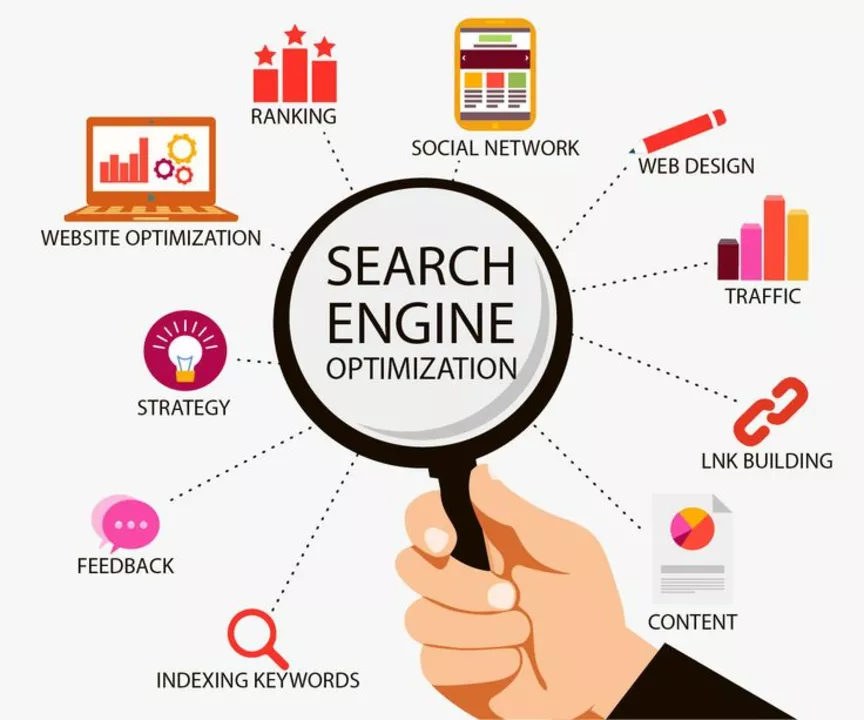How to put my blog on Google search engines?

- May, 9 2023
- 0 Comments
- Caspian Hartwell
Introduction: Setting the Stage for a Successful Blog
As an aspiring blogger, you may wonder how to make your blog visible to the world, and more specifically, how to put your blog on Google search engines. Well, worry not! In this article, I will guide you through nine essential steps to help you achieve this goal. Together, we will ensure that your blog is indexed by Google and becomes more accessible to your target audience.
Understanding the Importance of SEO
Before we dive into the technicalities, it's crucial to understand the importance of Search Engine Optimization (SEO). SEO is the process of optimizing your blog's content to rank higher in search engine results. This will increase your blog's visibility and lead to more organic traffic. By implementing effective SEO strategies, your blog will become more discoverable by Google and gain higher rankings in search results.
Setting Up Google Analytics
Google Analytics is a powerful tool that allows you to track your blog's performance and gain insights into your audience's behavior. To set up Google Analytics, sign up for a free account and follow the instructions to add the tracking code to your blog. This will enable you to monitor your blog's traffic, identify popular content, and uncover areas for improvement. With this valuable information in hand, you'll be better equipped to optimize your blog for search engines.
Submitting Your Blog to Google Search Console
Google Search Console, previously known as Google Webmaster Tools, is a vital tool for ensuring that your blog is indexed by Google. To get started, sign up for a free Google Search Console account and add your blog as a property. Then, verify your ownership of the blog using one of the available methods. Once verified, submit your blog's sitemap to Google Search Console. This will help Google discover and index your content more efficiently.
Creating an XML Sitemap
An XML sitemap is a file that lists all the pages on your blog, making it easier for search engines to crawl and index your content. To create an XML sitemap, you can use a free online sitemap generator or a plugin if you're using a blogging platform like WordPress. Once you have generated your sitemap, upload it to your blog's root directory and submit it to Google Search Console, as mentioned in the previous section.
Optimizing Your Blog's Content for SEO
Content is king, and optimizing your blog posts for SEO is essential for ranking higher in search engine results. Start by conducting keyword research to identify relevant phrases that your target audience is searching for. Then, incorporate these keywords naturally into your blog posts, titles, headings, and meta descriptions. Additionally, ensure that your content is engaging, informative, and provides value to your readers. High-quality content is more likely to be shared, linked to, and favored by search engines.
Optimizing Your Blog's On-Page SEO
On-page SEO refers to the optimization of individual elements on your blog, such as title tags, URLs, and image alt tags. These elements help search engines understand the context of your content and improve your blog's visibility. To optimize your on-page SEO, follow these best practices:
- Use descriptive and keyword-rich title tags
- Structure your URLs in a user-friendly manner
- Add alt tags to your images with relevant keywords
- Use header tags (H1, H2, H3) to improve readability
By following these on-page SEO best practices, you'll make it easier for search engines to crawl and index your content.
Building High-Quality Backlinks
Backlinks, or incoming links from other websites, play a significant role in improving your blog's visibility on Google. High-quality backlinks signal to search engines that your content is valuable and worth linking to. To build backlinks, consider guest posting on reputable blogs, creating shareable content, and engaging with influencers in your niche. Remember, quality is more important than quantity when it comes to backlinks.
Monitoring Your Blog's Performance
Regularly monitoring your blog's performance is essential to ensure that your SEO efforts are paying off. By analyzing your Google Analytics and Google Search Console data, you can identify trends, uncover issues, and make informed decisions to improve your blog's visibility on Google. Remember, SEO is an ongoing process that requires continuous optimization and adjustment.
Conclusion: Your Journey to a Visible Blog on Google
By following these nine steps, you'll be well on your way to putting your blog on Google search engines and reaching a wider audience. Remember, SEO is a long-term process, and results may not be immediate. With patience, persistence, and continuous optimization, your blog will become more visible on Google and attract the organic traffic you desire. Happy blogging!